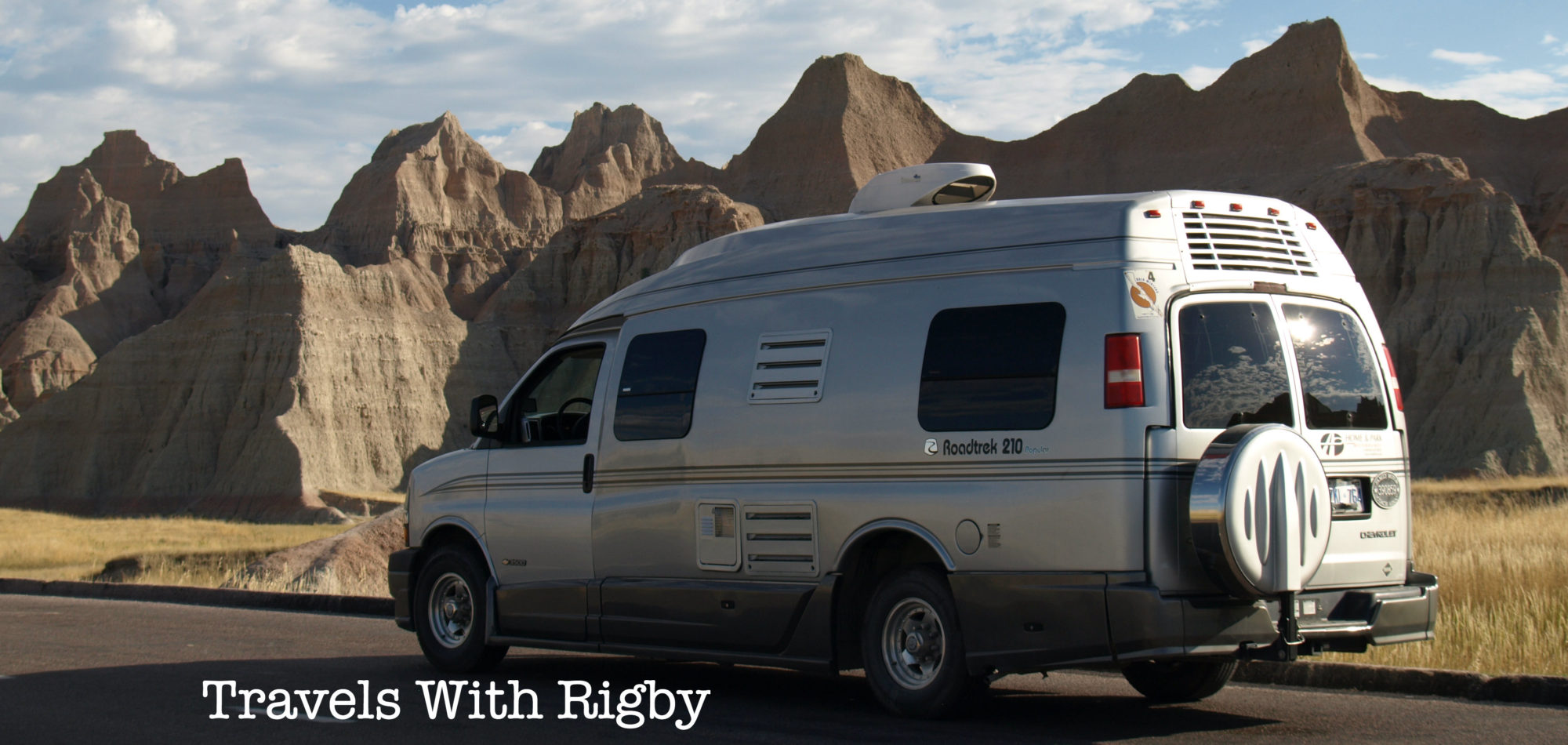There were a couple of typical small Western towns we wanted to explore on the way to Yellowstone National Park – Sheridan and Cody, both in Wyoming.
We stayed a couple of nights in the super tidy Peter D’s RV Park: walking distance from downtown Sheridan, very clean showers and laundry, Wi-Fi included (although the signal was slow when the park filled up in the evening) and very, very dog friendly. Pete met us with a couple of dog treats for Rigby and then showed us the four-acre, fenced off-leash dog yard. This was great – after being cooped up in the van with us, Rigby really needed to stretch her paws.
What we liked most about downtown Sheridan is the authentic Western town feel. No fancy airs, a beautifully restored, historic downtown main street, small independent shops and all set against a backdrop of the stunning Bighorn Mountains.
This region is the setting of the Longmire book and TV series (Netflix) – author Craig Johnson is a local fellow who writes in details about the landscape and the people here.
Sheridan has long been a railway town – the tracks run a few blocks above main street – it was a nice stop to take a break and get settled into the Western mindset. Here were the highlights of our stay:
- Main Street has beautiful architecture with dozens of brick buildings on the National Historic Register. At almost every street corner is a piece of public art sculpture, almost all Western themes.
- The Mint Bar (Main Street) with its very cool neon sign and photos of cows alongside local celebrities blanketing the walls.
- They have everything (and we mean everything, except the horse) you could possibly need for a horse at King’s Saddlery. It’s also prominently on Main Street, right close to the bookstore and the coffee bistro.
- Just looking up and seeing the Bighorns. Sheridan is a popular spot for excursions to the mountains.
- A five-minute drive from downtown is the Trail End State Historic Site, a beautifully restored early 20th-century brick mansion that once belonged to the prominent Kendrick family.
Once we tore ourselves away from Sheridan, we went west along Highway 14 into the Bighorn National Forest and up and over the Bighorn Range on the Wyoming Scenic Byway. There was a dusting of snow on the trees at the 8,300-ft pass and we slowed down for a herd of cattle and wranglers making their way along the roadway. Outside temperature up top was just above zero Celsius. Back in Ontario they were sweating through an unusual September heatwave!
What an amazing drive! One scenic vista after another and barely passed another vehicle the whole way (cattle yes, cars not so much). After the mountains and at the edge of the Bighorn Basin we passed through Shell: population 83 and home of two establishments, a campground and the Shell Beer-Café (guess they have to cover all the bases).
We arrived in Cody and were immediately taken with the main street – again, great, authentic architecture. Cody has a beautiful location, a rodeo grounds and lots to explore in town. We only had time to spend a few hours at the world-class Buffalo Bill Center of the West (a Smithsonian affiliate museum). It is huge – divided into five smaller museum galleries from natural history to the Plains Indians to firearms.
The museum aims to immerse visitors into the story of the real American West. William F. “Buffalo Bill” Cody believed that by encountering authentic western things, people would come to understand and appreciate the West. He started as a scout for the U.S. Army but is best known for his Buffalo Bill Wild West Shows. Lots of archives on display like a cancelled Wells Fargo envelope, Pony Express saddles, telegraph equipment, etc.
The part we liked the best was the natural history (the Draper Natural History Museum) on the sights, smells and sounds of the Greater Yellowstone region. It was very hands-on and touched all the senses. Howling wolves, bubbling hot springs, raging forest fires. Could have spent a whole day just in this section.
It was a 90-minute drive to the east gates of Yellowstone National Park and another hour from there to our first night’s campground. So, more of Cody will have to be on the “next time” list. The drive east out of town is stunning – the beautiful drive up and over the Absaroca Range (a part of the Central Rocky Mountain Chain). We passed beautiful riverside campgrounds that are on our list for another time. We could happily be based in Cody for a few days to explore the town and the hiking/driving opportunities in the nearby mountains.
On to Yellowstone . . .



























































